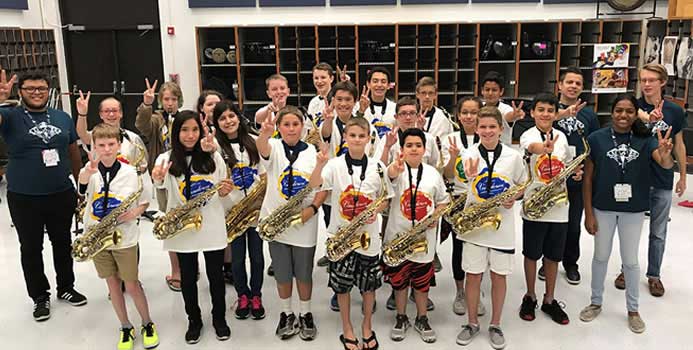It’s common to hear a student say, “No matter how much I practice this, it just doesn’t get any better”. This student has obviously gone through days or even weeks of practice room frustrations. So what can the teacher do?
Help the student get organized. Success requires a positive physical and mental environment, a plan and a routine. Since many students practice in a haphazard manner, it’s a wonder they get anything accomplished!
Conditions
Positive mental and physical conditions are crucial to success in the practice room. The student must evaluate these by asking, “How do I feel? Am I sleepy or hungry? Is my mind on something else? Do I have any pain?”. While he can’t always be in perfect form, it’s important to be alert and comfortable while practicing or the failure rate may increase. The physical environment also is very important. Is the room temperature and humidity acceptable? How are the acoustics? Is there a music stand? Is there good ventilation? The student must eliminate negatives, both human and environmental, to get the most out of practicing.
Goals
Students must have goals; hourly, daily, weekly, monthly and yearly ones. Without them practice lacks purpose and direction. A student must begin by saying, “What do I hope to accomplish this hour?” A goal could be anything from a warm-up exercise, to mastering a specific technical passage or performing an entire piece without stops. Practice sessions should be made up of several attainable goals with the student always monitoring his success and failure.
Tools
Although an instrument and a metronome are essential “tools” for practicing, other things may contribute to success. Why practice low notes for hours if the saxophone is leaking? How can intonation be improved without a well-tuned piano or electronic tuner? Probably the most useful tool is a mirror. If the student can see such things as embouchure and fingering problems, he may be able to fix them by himself. Similarly, a cassette tape recorder will allow the student to sit back and aurally review his performance.
Observation/Analysis/Prescription
The student must observe himself in the practice room or he cannot analyze a problem and prescribe a remedy. The teacher does this in the lesson and the student must do it while practicing. A mirror and tape recorder, along with ever-opened ears, help the student find problems. Once a problem is found, it must be analyzed. Exactly what is wrong? Is it the notes, articulation, technique, rhythm, or dynamics? How do you know? Do you hear it, feel it, sense it, or see it in the mirror? You must know what is wrong before you can take steps to fix it.
Segmentation & Repetition
Segmentation is the tearing apart and putting back together of a technical passage. Once the student analyzes the problem, he should be able to decide specifically which part of the passage he cannot play. Begin work at that spot and reduce it to the smallest playable unit, which may be only 2 notes. Repeat a unit at least 3 times in a row perfectly before going on. Add a note before and/or after the unit to expand it gradually. Continue to build until it becomes a phrase, a section and a movement, always remembering that concentration is indispensable.
Slow & Fast Practicing
Most teachers advocate a slow, methodical approach to practicing, gradually moving the tempo faster until the passage learned. This can be a long and boring process. Consider an alternative. Set the metronome at or near the performance tempo. Practice the smallest playable unit as described above and continue to expand it until the entire passage is mastered up to speed. Even work at a tempo faster than needed, so that you can relax at the performance tempo. The advantages of fast practicing include reduced finger motion (there’s less time for big finger strokes), added excitement during practicing (contributes to better concentration), better alternate fingering choices (easier to choose them at the final tempo) and quicker mastery of technical sections. Use both slow and fast practicing for variety.
Performance Practicing
Students must perform something everyday. Performing means no stops and total concentration. It could be scales, an etude, a solo or even ensemble music. The student should play through music, preferably with a tape recorder on, and review the results. The goal is no stops and no errors. Although eliminating all errors may be impossible, it is possible to eliminate all stops. By practicing the art of performing, the student can learn to deal with the unexpected when the performance really counts.
Practice Without the Instrument
Who ever said you had to have a saxophone to practice? Be creative. Practice tonguing patterns while driving to school. Exercise your fingers while watching TV or reading. Use the embouchure exercises found in The Art of Saxophone Playing to strengthen mouth muscles. Mentally practice a piece and then put ideas to work later with the saxophone. Listen to music performed by polished musicians, analyze what you hear and apply their nuances to your playing.
I’m sure both teachers and students can add other ideas to this list of practice suggestions. The main thing is to make those hours of practicing pay off in improved performance.


